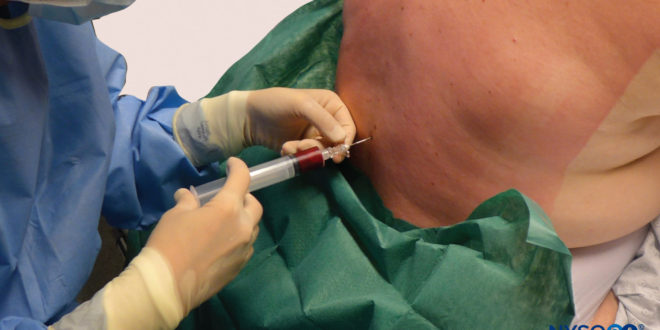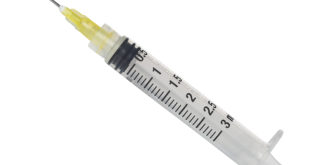So you are getting a blood patch for a spinal headache. What is a blood patch?
This is a procedure performed by anesthesiologists to help relieve a spinal headache, or a “post-dural puncture headache”. The spinal headache is classically described as postural in nature. When the patient assumes a sitting or standing position, the headache is present or gets worse. When they are laying down, the headache goes away or is significantly improved.
There are several theories as to why a spinal headache occurs, but it usually is seen after a lumbar puncture or spinal anesthesia. It can occur after an epidural placement as well.
The thought is that the hole made in the dura to inject spinal medicine or remove spinal fluid for testing, can continue to leak spinal fluid. This is then thought to cause the brain to “sag” when a patient sits or stands up. And this phenomenon can translate into a horrible headache.
Another thought is that when a patient assumes a vertical position, there is more pressure in the spinal space, more spinal fluid leaks out, and the vessels in the brain increase in size to compensate.
Regardless of the mechanism of a post-dural puncture headache, if your doctor believes you have a spinal headache, a blood patch may help.
During a blood patch, a small volume of blood drawn from an iv is injected into the epidural space to “patch” the hole in the dura. I will not attempt to quote statistics, but a blood patch usually helps right away.
This is if the headache is truly a post dural puncture headache. If the blood patch doesn’t work, it may mean that the headache is from a multitude of other potential causes.
I don’t mention this to downplay the significant discomfort caused by a spinal headache, but rather to alert you that there may be other causes. And the post dural puncture headache may be hurting you on top of another type of headache as well.
The process for placing a blood patch is similar to that for the placement of a labor epidural. The added step is that blood is drawn from your iv to be placed into the epidural space. When the blood is used as the patch, it often will cover the dural hole until it can close on its own. And hopefully by the time your body absorbs the blood clot that was used as the patch, the hole in the dura will be closed up.
If you have had a post dural puncture headache, or a blood patch, let us know what your experience meant to you. The hope is that we can learn from you and others can hear what worked for them.
Thanks for stopping by anesthesiamyths.com. Please feel free to leave a comment below, contact us, or visit the forum.
Stay healthy!
 Anesthesia Myths: Get the Facts, Lose the Fear | Your #1 Anesthesia Resource in Simple language
Anesthesia Myths: Get the Facts, Lose the Fear | Your #1 Anesthesia Resource in Simple language




